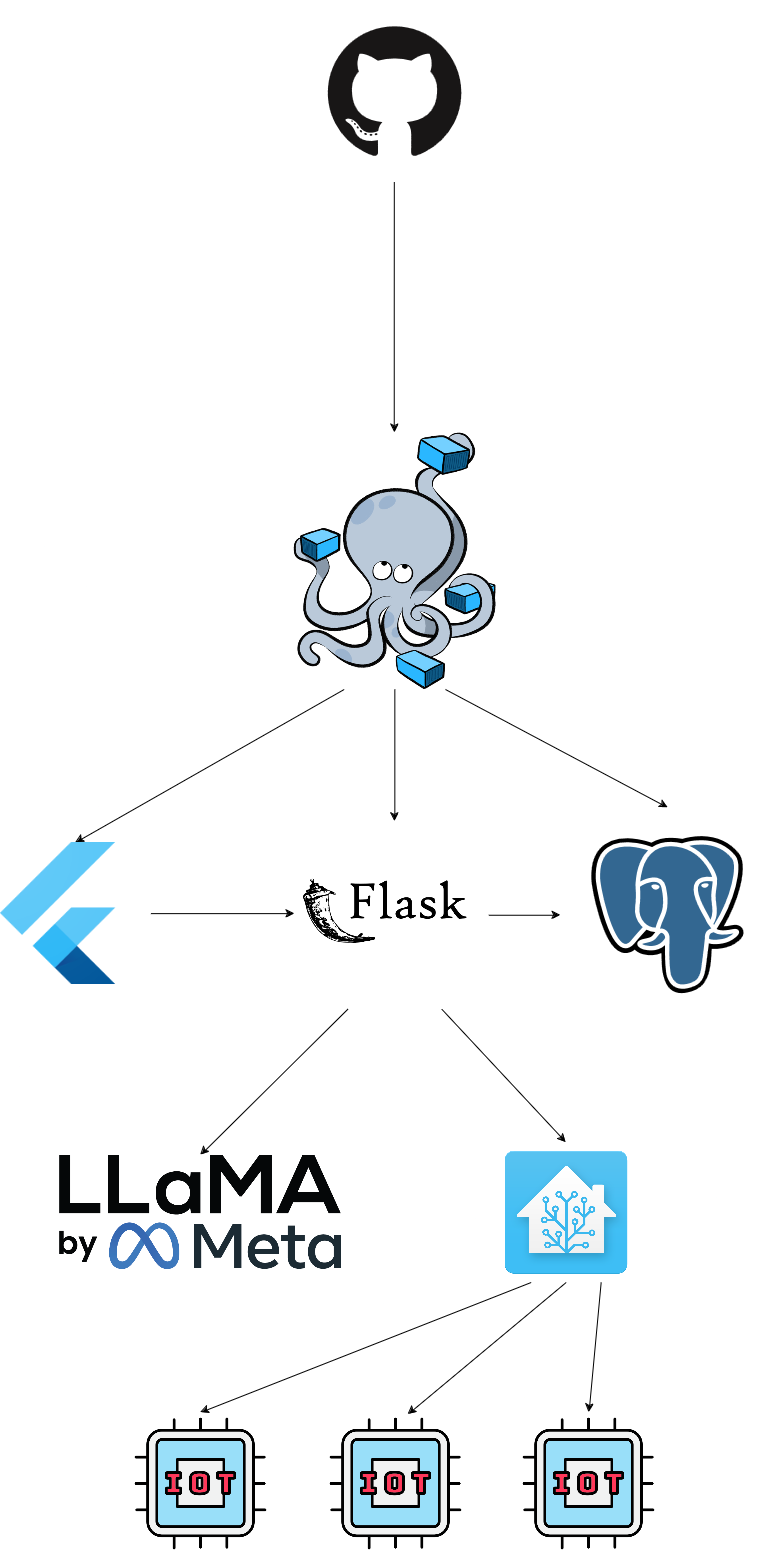Imagine coming into your apartment after a long and exhausting day and hearing the just the right song that you need to properly unwind.
Imagine going to the bathroom exhausted and going into the shower only to realize that you didn't turn on the ventilation. Suddenly, it starts working as soon as you feel the first drops of water on your tired face. You feel a sense of relief.
Do you ever spend more energy than you should on how long your kitchen hood has been cleaning the air? If you were to use IHome, you wouldn't have to worry about that anymore.
IHome was designed & planned with personal and specific problems in mind.
The project was created during a 24 hour hackathon, so we had to think of something that was feasible and (almost) production-ready in less than a day.
The outcome was the following:
An intelligent, generative AI & IoT powered smart home system which caters to your routine & preferences.
Once someone sets up the sensors around your space of choice, the app starts collecting and analyzing data from them. As a user, you toggle the things that you would like IHome to do for you, such as:
- Playing specific music and turning the ventilation on as soon as you start showering.
- Casting a video that you put into your Watch Later list on YouTube or some other service on your TV as soon as you approach the living room after a work day.
- Automatically dimming the lights to a cozy level as soon as you sit down to read a book.
- Turning on outdoor lights when your car approaches the driveway.
In order for users to feel comfortable with the application & the data it collects, the mobile app provides the option of enabling & disabling sensors that users don't want to use in their home system.
Current state of the project24 hours after the hackathon started, the project offers users the following features:
- Toggling features & sensors from the mobile application.
- Constant data analysis from enabled sensors which is sent to a LLAMA AI using their free API. That data is processed along with some predefined options and patterns that should work for most people. The AI then comes to a conclusion about the current state of the rooms that are being supervised. For example: is a party going on in the living room (radar sensor)? Is someone taking a shower in the bathroom (multiple sensors)?
- After the AI comes to a conclusion, another prompt is sent to it. The prompt contains predefined actions that are tied to the user's preferences that he can toggle in the mobile app. The AI responds with the next action that should happen in the smart system - either a predefined one (turn the AC on), or a general one that, for now, is pronounced using text to speech.
The next action steps for the development of this smart home system are the following:
- Integrating with many other physical devices & offering users more features by using more chips.
- Create & document the process of the entire setup which includes setting up the boards, sensors and home assistant instance. This process would be done by technicians (or even friends or random enthusiasts), so the only thing regular, non tech-savvy users would do is toggle actions & sensors and have their day-to-day life slightly improved.
A big thank you to everyone who organized the event during which the system was made, including all activities not related to the actual competition.
We had fun working on this project, meeting people from abroad during the competition in Sarajevo.
We will surely leave with smiles on our faces and look forward to meeting all of the participants again in the future :)
You also asked for critiques and things that could have been better - we could have had burek for a meal since people that aren't from the Balkans would surely be amazed by the meal.
One thing the organizers could bare in mind in the future could be telling the participants in advance which devices are available to them during the competition - for example, a team didn't bring mice with them because they thought that mice would have been provided to them.
Other than that, nothing else comes to mind.
Thank you for this opportunity and for giving us the chance to learn about IoT & AI, explore the fields more in-depth and create a system in which we see lots of potential!
















Comments
Please log in or sign up to comment.